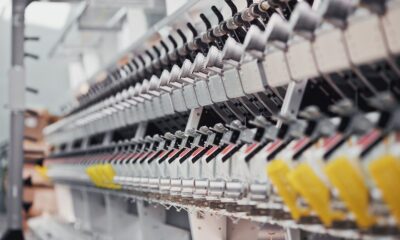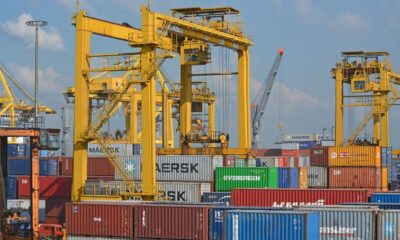Fashion
India’s real GDP growth for Q1 FY27 projected at 6.6%: RBI
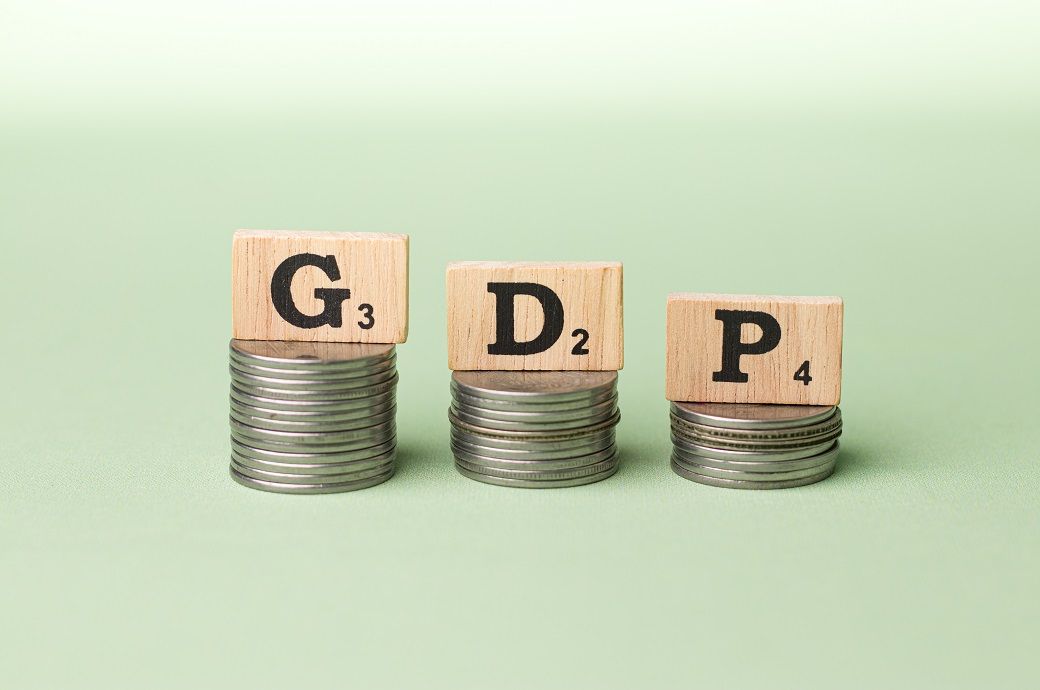
Real GDP growth for Q1 FY27 is projected at 6.6 per cent. The risks are evenly balanced.
The above normal southwest monsoon, lower inflation, rising capacity utilisation and congenial financial conditions continue to support domestic economic activity, he wrote. The supportive monetary, regulatory and fiscal policies including robust government capital expenditure, should also boost demand.
India’s real GDP growth for FY26 is projected at 6.5 per cent, with Q1 at 6.5 per cent, Q2 at 6.7 per cent, Q3 at 6.6 per cent and Q4 at 6.3 per cent, the central bank said.
Such growth for Q1 FY27 is projected at 6.6 per cent.
CPI inflation for FY26 is projected at 3.1 per cent, with Q2 at 2.1 per cent, Q3 at 3.1 per cent and Q4 at 4.4 per cent.
CPI inflation for Q1 FY27 is projected at 4.9 per cent.
Domestic growth is holding up and is broadly evolving along the lines of the central bank’s assessment even though some high-frequency indicators showed mixed signals in May-June, and the inflation outlook for fiscal 2025-26 has become more benign than expected in June, he wrote.
Rural consumption remains resilient, while urban consumption revival, especially discretionary spending, is tepid, he noted.
Fixed investment supported by buoyant government capital expenditure (capex) continues to support economic activity.
While the manufacturing purchasing managers’ index (PMI) remained elevated in the first quarter (Q1) of FY26, the index of industrial production (IIP) showed moderation.
Prospects of external demand, however, remain uncertain amidst ongoing tariff announcements and trade negotiations, the RBI governor wrote. The headwinds emanating from prolonged geopolitical tensions, persisting global uncertainties, and volatility in global financial markets pose risks to the growth outlook.
Consumer price index (CPI)-based headline inflation declined for the eighth consecutive month to a 77-month low of 2.1 per cent in June.
Core inflation, which remained within a narrow range of 4.1-4.2 per cent during February-May, increased to 4.4 per cent in June.
CPI inflation, however, is likely to edge up above 4 per cent in Q4 FY26 and beyond, as unfavourable base effects and demand side factors from policy actions come into play, the central bank governor wrote.
Barring any major negative shock to input prices, core inflation is likely to remain moderately above 4 per cent during the year. Weather-related shocks pose risks to inflation outlook.
Considering all these factors, CPI inflation for FY26 is now projected at 3.1 per cent, with Q2 at 2.1 per cent, Q3 at 3.1 per cent and Q4 at 4.4 per cent. CPI inflation for Q1 FY27 is projected at 4.9 per cent.
Fibre2Fashion News Desk (DS)
Fashion
UK-based Sosandar lifts revenue 15%, FY26 profit outlook on track
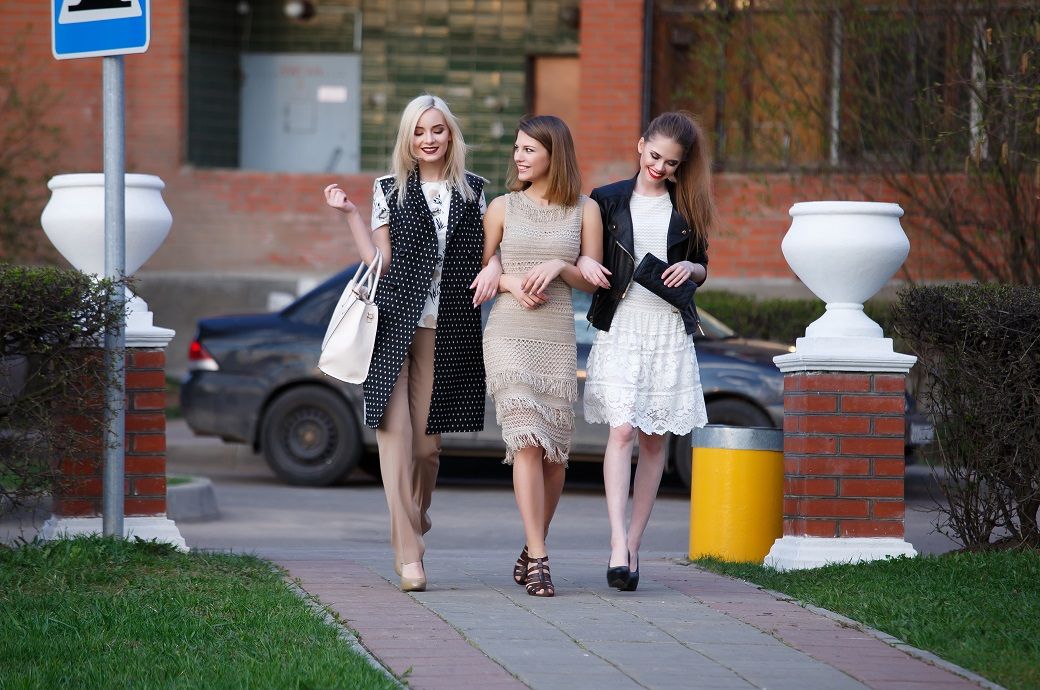
UK-based womenswear fashion brand Sosandar PLC has reported a revenue rise of 15 per cent year on year to £18.7 million (~$24.7 million), with own site sales jumping 28 per cent, for the six months ended September 30, 2025 (H1 FY26). Gross margin held steady at 62.2 per cent, reflecting the company’s continued focus on strategic margin improvement.
The retailer posted a loss before tax of £1.1 million (~$1.45 million), broadly in line with expectations, due to seasonal second-half profit weighting and the impact of its own store roll-out alongside an earlier M&S cyber incident.
Sosandar ended the period with £7.7 million in net cash, slightly higher compared with £7.3 million on March 31.
The business continues to perform strongly with its third-party partners, especially Next, where it ranks as a top-selling brand. The company also launched a licensed homeware range with Next in September, which has delivered a strong initial performance in line with expectations.
Physical retail stores continue to weigh on profitability while they mature, although Chelmsford and Marlow are reported to be progressing toward breakeven in their second year, Sosandar said in a release.
Recent trading in October and November has been in line with expectations, with the website delivering continued strong growth. Trading through M&S has resumed following its cyber disruption. Gross margin improved further to 67.2 per cent in the ongoing period, driven by higher intake margins on new season ranges.
“We are really pleased with how the business has performed over the past six months. During this period, we delivered a return to revenue growth, supported by strong momentum through our own website which remains a key driver of both sales and customer engagement, alongside a resilient gross margin,” Ali Hall and Julie Lavington, co-CEOs commented.
Cash has strengthened to £9.5 million as at November 22 following the seasonal uplift, and the firm has completed a capital reduction, buying back 5,000,000 shares held in treasury.
Sosandar said full-year outlook remains on track, reiterating revenue expectations of £43.6 million and profit before tax of £0.4 million for FY26.
“The Autumn/Winter season has delivered another robust trading performance, with customers continuing to respond positively to our unique collections across both occasion and everyday dressing. Looking forward, the foundations have been laid for sustainable, profitable, cash generative growth,” the co-CEOs said.
Fibre2Fashion News Desk (HU)
Fashion
Bangladesh’s economic outlook cautiously optimistic: Govt
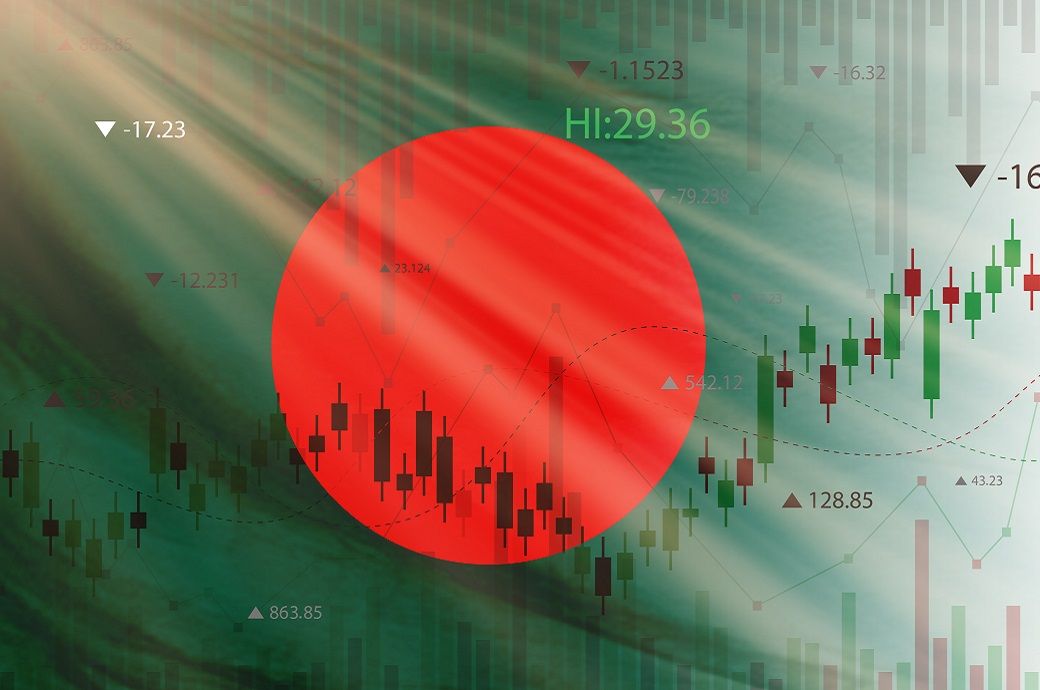
As Bangladesh heads towards general election in February next year, the GED’s economic outlook is cautiously optimistic.
Deep structural weaknesses along with the political transition period could constrain economic momentum, Bangladesh’s Planning Commission recently said.
The economy could regain pace if the election leads to a clear political direction and reforms are carried out.
Election-related spending and possible disruptions may add further pressure on inflation and the foreign exchange market.
The update said the economy could regain pace if the election produces a clear political direction and the next government decisively undertakes long-delayed reforms, particularly in improving the business climate, stabilising the banking system and ensuring fiscal and energy security.
Without such reforms, the recovery may be short-lived, it noted.
Election-related spending and possible disruptions during the transition are expected to add further pressure on inflation and the foreign exchange market, complicating stabilisation efforts, domestic media reports cited the GED document as saying.
Overall inflation dropped to 8.17 per cent in October from 10.87 per cent a year earlier. Non-food inflation inched up to 9.13 per cent.
While bank deposits grew at nearly double-digit rates through August and September, private-sector credit growth fell to just 6.29 per cent—the lowest in at least four years and well below the central bank’s target of 7.2 per cent for fiscal 2025-26.
High lending rates, cautious bank behaviour and political uncertainty have depressed investment appetite. Meanwhile, government borrowing from commercial banks surged by 24.45 per cent in September, raising concerns about crowding out private borrowers, said the document.
Revenue collection in October this year fell short of the target by Tk 8,324 crore, achieving only 77.37 per cent of the month’s goal. All major revenue streams—import duties, domestic VAT, and income tax—underperformed.
Foreign exchange reserves improved significantly, rising from $24.35 billion in November 2024 to $32.34 billion in October 2025.
Export earnings remained volatile. Exports peaked in July at $4.77 billion, but suffered sharp declines in April and June.
Fibre2Fashion News Desk (DS)
Fashion
IKEA opens its furthest store from Sweden in New Zealand
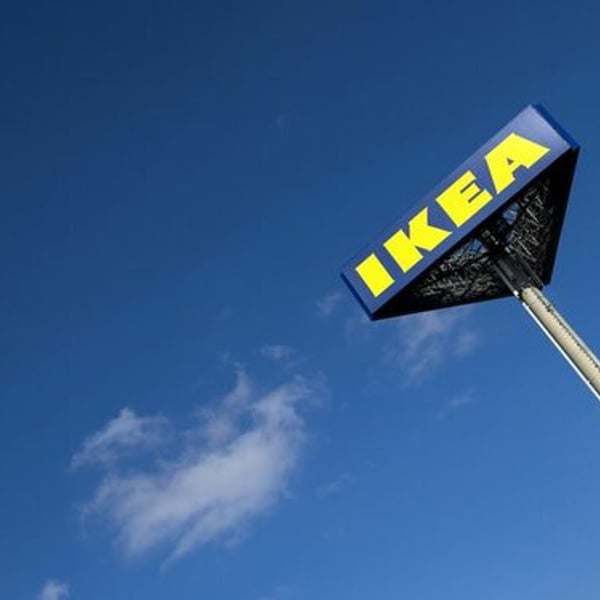
By
Reuters
Published
December 4, 2025
IKEA opened its first store in New Zealand on Thursday, entering its 64th market and marking the furniture retailer’s most distant outpost from its native Sweden. The long-awaited 34,000 square-metre (365,973 square foot) store at the Sylvia Park shopping centre in Auckland employs 500 people and is IKEA’s 505th store.
IKEA’s New Zealand expansion was announced in 2019 and comes 50 years after opening in neighbouring Australia. IKEA now operates in 64 markets around the world.
IKEA franchisee Ingka Group said the opening, which drew thousands of people, was special given New Zealand’s distance from Sweden. “It’s a real leap of faith, investment and friendship, showing we’re not just exporting a store, we’re planting roots for the long term, creating jobs, learning from local communities and tailoring our offer for Kiwi homes,” Retail Manager Tolga Oncu said in a statement.
© Thomson Reuters 2025 All rights reserved.
-

 Tech4 days ago
Tech4 days agoGet Your Steps In From Your Home Office With This Walking Pad—On Sale This Week
-

 Sports3 days ago
Sports3 days agoIndia Triumphs Over South Africa in First ODI Thanks to Kohli’s Heroics – SUCH TV
-

 Entertainment3 days ago
Entertainment3 days agoSadie Sink talks about the future of Max in ‘Stranger Things’
-

 Fashion3 days ago
Fashion3 days agoResults are in: US Black Friday store visits down, e-visits up, apparel shines
-

 Politics3 days ago
Politics3 days agoElon Musk reveals partner’s half-Indian roots, son’s middle name ‘Sekhar’
-

 Tech3 days ago
Tech3 days agoPrague’s City Center Sparkles, Buzzes, and Burns at the Signal Festival
-
Uncategorized1 week ago
[CinePlex360] Please moderate: “Americans would
-

 Tech1 week ago
Tech1 week agoWake Up—the Best Black Friday Mattress Sales Are Here








